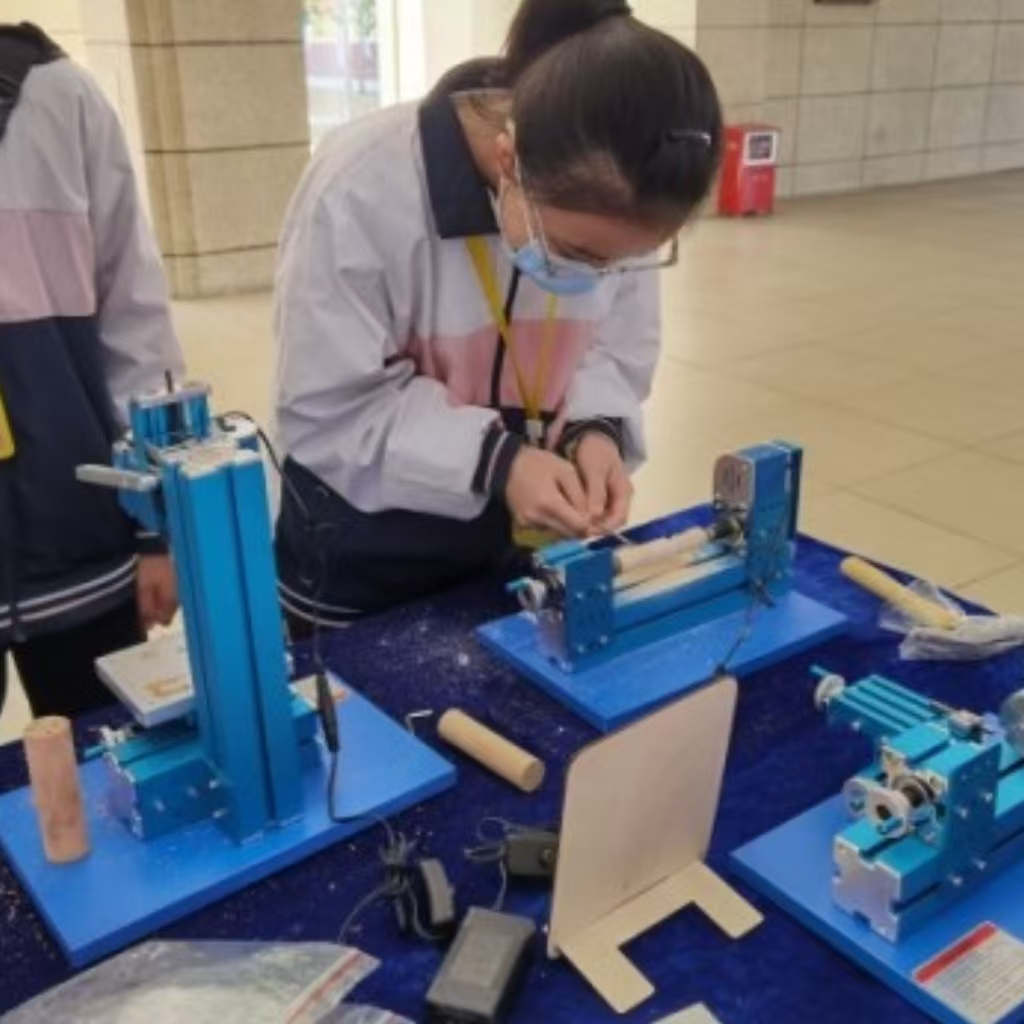Blog
Xendoll has 22 years of experience in the production of small machine tools. We will help you choose the suitable machine and share our experience in CNC machining with you.
 Sep 12, 2025
Sep 12, 2025

 563
563
In the modern world of manufacturing, prototyping, and hobbyist creation, Computer Numerical Control (CNC) machines have revolutionized how we shape raw materials into precision parts. For mechanical distributors, educational institutions, and machining enthusiasts, understanding the landscape of CNC technology is crucial. A common question we hear is, "How many types of CNC machines are there?" The answer isn't a single number, as they can be categorized by their function, the number of axes they operate on, or their specific purpose. This article will break down the primary types of CNC machines, explaining their unique capabilities to help you identify the perfect tool for your application. Whether you're a seasoned professional or a curious beginner, this guide will provide a clear roadmap of the CNC ecosystem.

Body (Breaking Down the Types)
CNC machines are best understood by their core function: the subtractive process of removing material from a workpiece. Here are the most common and impactful types you will encounter.
1. CNC Mills
Arguably the most recognizable type, CNC mills use rotary cutting tools to remove material from a stationary workpiece. They operate on a minimum of three axes (X, Y, and Z) but modern models often have 4 or 5 axes, allowing for incredibly complex geometries. They are incredibly versatile and can machine a wide range of materials, including metals, plastics, and wood.
Ideal For: Creating gears, slots, holes, and intricate 3D contours. They are a staple in machine shops, fabrication facilities, and advanced hobbyist workshops.
2. CNC Lathes
The inverse of a mill, a CNC lathe (or CNC turning center) rotates the workpiece at high speed against a stationary cutting tool. This process is perfect for creating cylindrical or conical shapes. Lathes excel at producing parts with high levels of symmetry and excellent surface finishes.
Ideal For: Manufacturing shafts, bolts, pulleys, and any parts that are symmetrical around a central axis. They are fundamental in automotive and aerospace component production.
3. CNC Routers
Sharing similarities with mills, CNC routers are typically designed for softer materials like wood, plastics, composites, and non-ferrous metals. They are known for their large work areas, making them perfect for handling full sheets of material. They are generally less rigid than industrial mills but offer fantastic value and size for specific applications.
Ideal For: Sign-making, woodworking, cabinetry, prototyping, and creating large-format artistic pieces. They are extremely popular with woodworkers and small creative businesses.
4. CNC Plasma Cutters
This type uses a high-powered plasma torch to cut through electrically conductive materials. The plasma arc is generated by combining compressed gas and an electrical arc, melting the material at an extremely high temperature. CNC systems guide the torch with precision.
Ideal For: Quickly cutting large sheets of steel, stainless steel, aluminum, and other metals. They are essential in metal fabrication shops, automotive repair, and industrial construction.
5. CNC Laser Cutters
Similar to plasma cutters in application, laser cutters use a highly focused laser beam to melt, burn, or vaporize material. They offer exceptional precision and can create very intricate cuts with a clean, finished edge. They can work on a wider variety of materials, including metal, plastic, wood, glass, and fabric.
Ideal For: Precision cutting where a high-quality edge finish is required. Common in electronics, medical device manufacturing, and personalized engraving.
6. CNC Electrical Discharge Machines (EDM)
EDM is a unique, non-traditional machining process. It uses electrical sparks or discharges to erode material into a desired shape. The workpiece and electrode never actually make contact, making EDM perfect for machining extremely hard materials or creating complex, delicate shapes that would be difficult with a mechanical tool.
Ideal For: Creating mold cavities, intricate dies, and machining hardened tool steel and exotic alloys.
7. CNC Grinders
Precision is paramount in finishing operations, and CNC grinders deliver. They use a rotating abrasive wheel to remove small amounts of material, achieving extremely tight tolerances and superior surface finishes on a workpiece.
Ideal For: Final finishing of parts, creating precise angles, and sharpening tools. Critical in the production of precision engine components and cutting tools.

Conclusion (Summary and Application)
As we've explored, the world of CNC machinery is diverse, with each type engineered for a specific set of tasks. From the versatile CNC mill and the rotational prowess of the CNC lathe to the cutting power of plasma and laser systems, the "right" machine is defined by your material, desired outcome, and required precision.
For overseas mechanical distributors, understanding these differences is key to advising your clients and stocking the right equipment. Educational equipment dealers can leverage this knowledge to build practical, curriculum-relevant lab setups for schools and universities. Finally, for the machining enthusiast, starting with a versatile desktop CNC mill or router—like the high-precision, benchtop models offered by Xendoll Tools—is often the perfect entry point into this exciting world.
The question isn't just "how many types exist?" but "which type empowers my specific project?" At Xendoll Tools, we provide a range of mini CNC machines and desktop solutions that bring industrial-grade precision to smaller workshops, classrooms, and hobbyist garages. Explore our collection at xendolltools.com to find the CNC machine that will turn your digital designs into tangible reality.



 Show all our samples
Show all our samples
 Provide you with a free quote
Provide you with a free quote
 Answer all the questions you may have
Answer all the questions you may have
 Guided installation and other options
Guided installation and other options